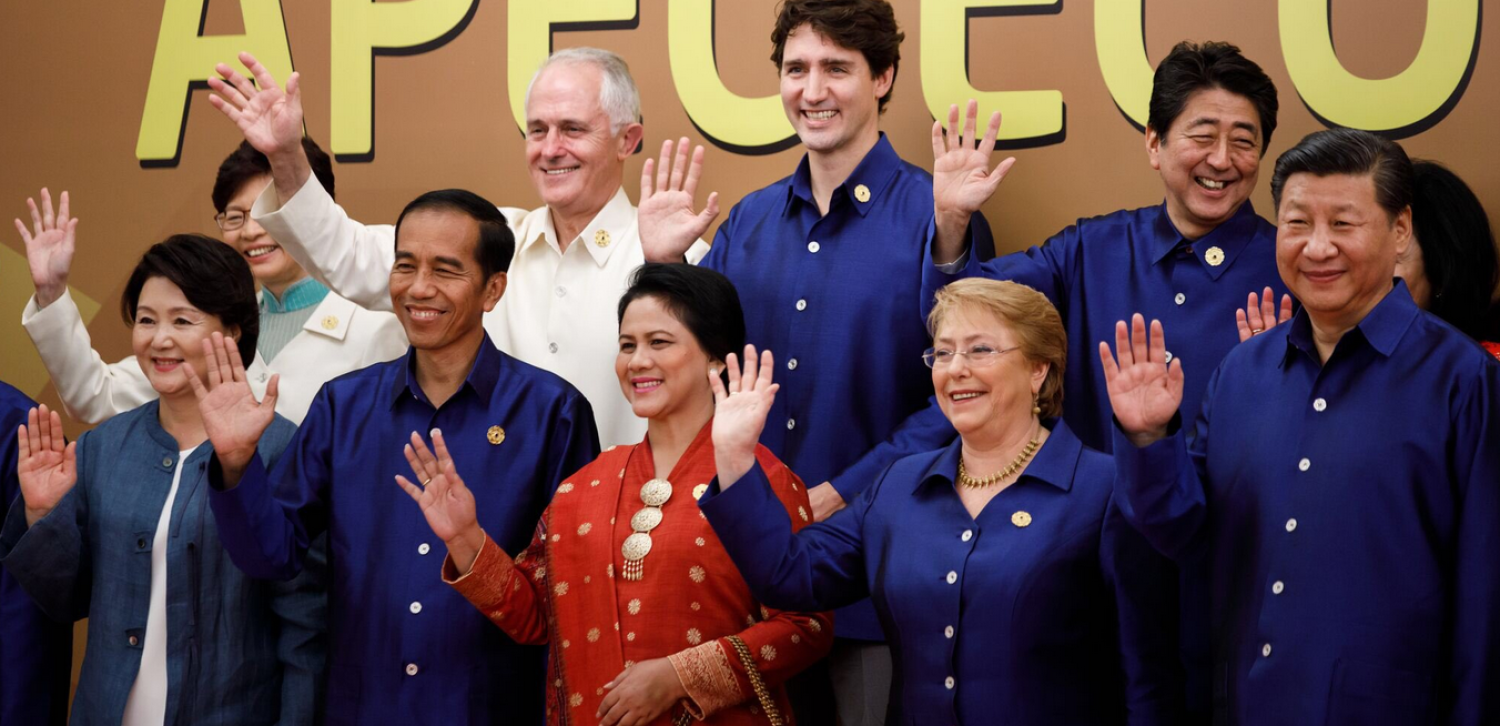The strong expectation of the leaders of many countries involved in the Trans-Pacific Partnership (TPP), including Prime Minister Malcolm Turnbull, was that an agreement would be concluded in the margins of the APEC Summit at the weekend in Vietnam. This was to be a significant achievement given the TPP was widely proclaimed as dead when Donald Trump withdrew the US from the deal in January 2017. But Canada spoilt the party.
Canada’s Justin Trudeau failed to turn up for a meeting with the other 10 leaders who thought they would formally sign off on a deal. In the space of 24 hours the headlines from Danang swung from ‘TPP-11 pact reached, with US left behind’, to ‘Trudeau no-show derails TPP trade deal’ and back to ‘Trans-Pacific Partnership deal saved despite Trudeau no-show’.
Following a good deal of recrimination against Canada, the TPP was salvaged. Trade ministers issued a statement on Saturday to say they had agreed on the ‘core elements’ of the Comprehensive and Progressive Agreement for Trans-Pacific Partnership (CPTPP – the new name for the TPP), identifying areas of progress but not yet consensus. Still, this was a far cry from the outcome Turnbull and other leaders had expected.
What was Canada seeking achieve? Was Trudeau’s dramatic no-show part of a cunning plan to gain extra concessions, or, as some speculated, a move designed to send a signal to the US regarding the renegotiation of NAFTA?
My money is on a simpler explanation; there was a stuff-up somewhere along the way. Perhaps the other countries were too anxious to conclude an agreement and were not listening when Canada kept saying it would not be rushed. Alternatively, Canada’s trade minister, Francois-Philippe Champagne, may have over-reached and implied that Canada would conclude a deal at the leaders’ meeting when this position was not supported by Trudeau.
Regardless of Trudeau’s motives, Canada has certainly taken the momentum out of the TPP process. The clear signal is that some tough negotiations are still to come, with no timetable for their resolution. No one will take Canada for granted when it comes to trade deals.
To state the obvious, multilateral trade agreements are not easy. Look at the failure of the Doha Development Round after 14 years of protracted negotiations.
With that in mind, it is a relief that the final headlines from Danang referred to the TPP being ‘salvaged’. With a backlash against globalisation and Trump’s repudiation of future US involvement in multilateral agreements, it is important the TPP proceed. Successfully concluding the TPP in this environment would keep the flame alive for global trade agreements and liberalisation.
Had the 11 leaders left Danang with no effort to resolve differences, this would have been a body blow for multilateral and mega-regional trade agreements, particularly ambitious ones. Trump’s endorsement of bilateral trade deals as the only way to proceed would have been vindicated. It will be a long time before the world gets another shot at a trade deal like the TPP.
The rhetoric around the TPP is correct: it is an ambitious trade deal which could set the benchmark for trade agreements in the 21st century. The TPP sets high standards in areas such as labour, the environment, state-owned enterprises, intellectual property, the digital economy and cyber security. It is far more ambitious when compared to the other regional trade agreement under consideration, the Regional Comprehensive Economic Partnership (RCEP), which largely seeks to harmonise tariff schedules and rules of origin between members. And the RCEP negotiations are progressing at a painfully slow pace.
The ambitious nature of the TPP contributed to the difficulties in concluding an agreement. For example, the labour standards in the agreement put pressure on countries such as Vietnam and Malaysia to improve workers' rights. The newly elected government in New Zealand had concerns the TPP would cause problems for its proposed ban on foreign ‘speculators’ buying New Zealand homes. Canada was concerned about implications for its policy of protecting cultural diversity.
But many countries were prepared to make difficult concessions in return for gaining access to the US market. It was not surprising that after the US withdrew, the way forward with the CPTPP was to ‘suspend’ some of the more challenging provisions of the original TPP framework. At least they are only being suspended and not removed.
Donald Trump used a speech at APEC to pledge the US would never again join a multilateral deal like the TPP. Trump also criticised countries for not sticking to trade rules. The Obama Administration had promoted the TPP on the basis that ‘if we don’t take the lead in writing the economic rules of the road through trade agreements like the TPP, other countries will.’ The ‘other countries’ were China. The original TPP agreement basically reflected the US position on the ambitious clauses; the US largely wrote the ‘rules of the road’. Now the US does not have a say in the future of the TPP. Mike Froman, who was US Trade Representative in the Obama Administration, was right when he described Trump leaving the TPP as a ‘strategic blunder’.
Although the TPP remains in play, it is premature to say it will come into operation, let alone when. Much work still remains to ensure all the concerns that have been raised by countries are accommodated. Even if an agreement is formally signed, it still has to pass the domestic legal procedures of each participating country to be implemented. For some countries, even if the leader signs an agreement, there is no guarantee it will be passed by its parliament. Australia is a case in point.
But at least the TPP is still alive. And while there is life, there is hope.

